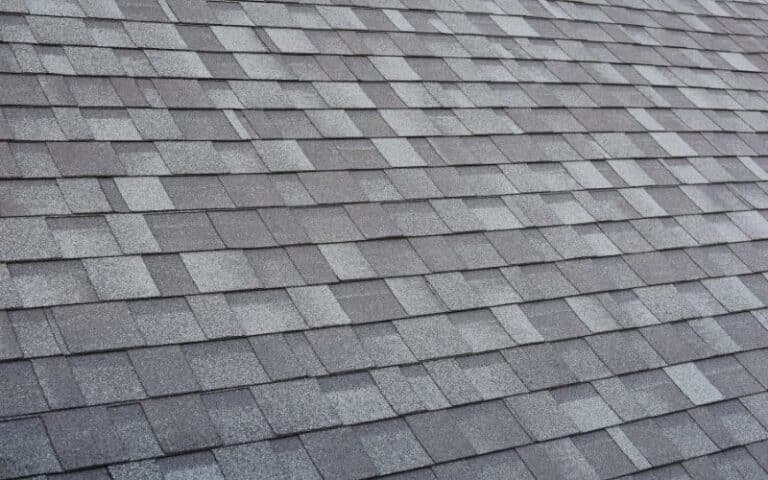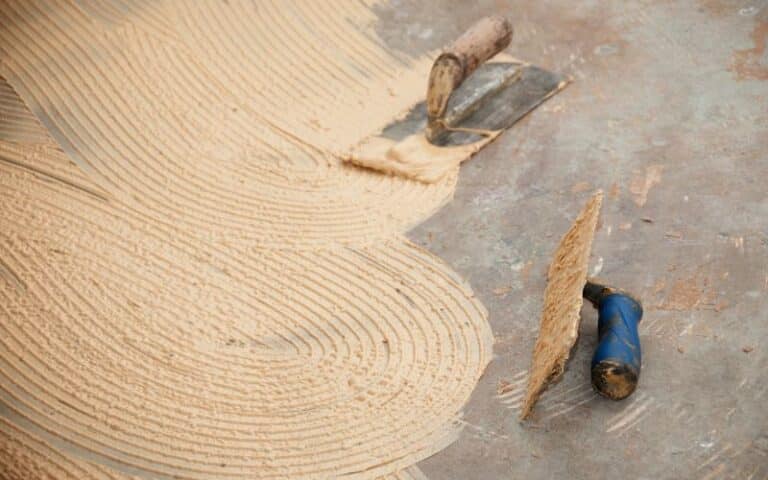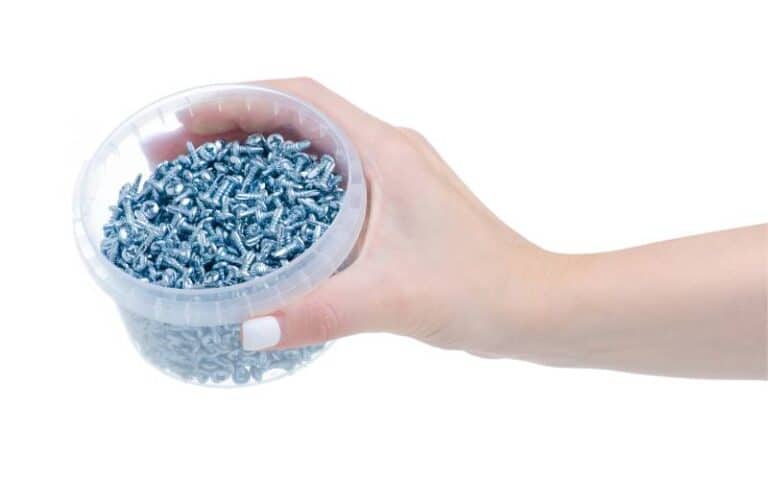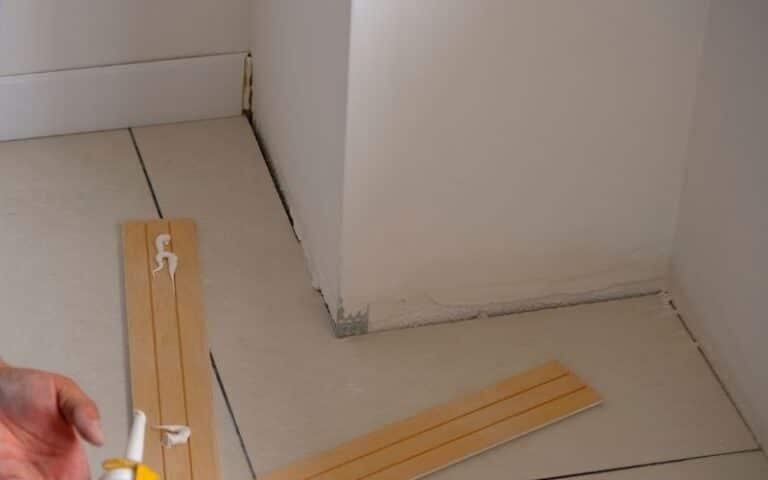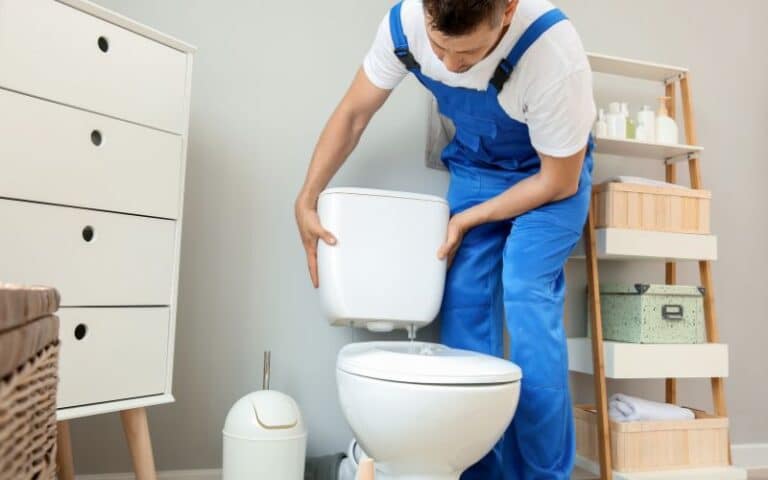In temperatures that sometimes drop to extreme degrees, and even in otherwise warm climates, winters come with snow, wind, and freezing rain.
These phenomena can allow icicles and ice dams to form on your roof, which can cause damage to your roof and home.
In winter, when snow falls on roofs, the heat from the house causes the snow on the roof to melt. The melted snow then gathers in a gutter, and the water overflows the gutters to make icicles. However, it would be best to avoid this because it is dangerous.
In this article, I’ll discuss the dangers of icicles between the gutter and fascia.
Additionally, I’ll teach you how to prevent and remove icicles. So, keep reading.
Ready for a Roofing Quiz?
Ready for a Drywall Quiz?
Should You Worry About Icicles Between Gutter And Fascia?
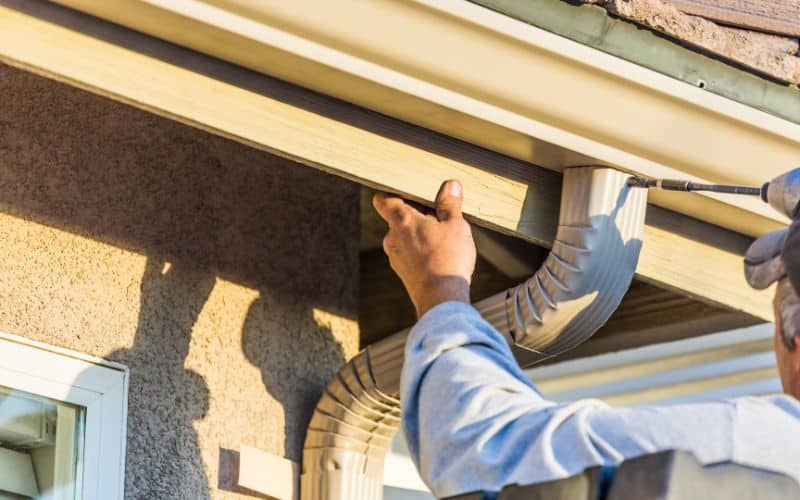
Yes, you should. Icicles may look especially beautiful hanging from your roof, but with long and continued h occurrence, they can damage your roof and even the rest of your home.
If you don’t take care of icicles, they melt and, in falling, can physically harm you, your family, and even your guests.
Also, the weight of trapped ice is potentially dangerous to your roof. Icicles can tear off your gutters and loosen the shingles, making water enter and back into your home.
Icicles can damage your roofing considerably. They can also make the interior part of your home vulnerable to leakages.
The water that icicles cause to enter your home can make the ceilings saggy and stained. It can also make the paint peel, making the attic insulation soggy.
In addition, there is a more immediate case of safety for you and your family.
Icicles can fall at any time without warning. A falling icicle can injure anyone within range of its fall.
So, if you have icicles on your roof, it’s best to remove them as soon as you can to prevent such an accident.
Finally, if icicles form on your roof unchecked, they can turn into ice dams which will be more dangerous. To identify them, you need to know the difference between icicles and ice dams.
So, below is a table differentiating icicles and ice dams.
| Icicles | Ice Dams |
|---|---|
| Icicles are smaller and have an unmistakable shape. | Ice dams are large chunks of ice. |
| Icicles form when melted snow flows from the roof. | Ice dams form on the roof of the house. |
| Icicles pose less of a threat since they are smaller and lighter. | Ice dams can cause significant damage to the roof and the house. |
Can You Prevent Icicles From Forming In Your Gutter?
There are many ways to prevent icicles from forming on your roof, but the most effective ways are.
- Insulating the attic in your home.
- Provide better ventilation in your attic
- Increase the heat on the edge of your roof or your gutters.
- Replace small vents with larger vents.
Some contractors say that icicles aren’t particularly dangerous to the roof, but some homeowners prefer not to have icicles at all.
If you’re one of them, let’s detail how you can prevent Icicles from forming in your gutters.
#1. Ensure That Your Attic Is Cool
One factor that contributes to icicles forming is a warm roof. The roof is above freezing. As a result, the snow melts rolls down the roof, and refreezes.
So, if you can keep the roof at the same temperature as the outdoors, the snow will not get a chance to refreeze. There are some ways to keep your attic cool.
#2. Ventilate The Attic
Check the ventilation in your attic again. If you already have some ventilation in the attic, check that it’s still functional and remove all dirt and debris.
If there is none, find a way to ventilate the ridge and eaves of the roof. That way, air can move through and keep the attic warm.
#3. Insulate The Floor
The goal is to keep the heat away from the roof; if you can’t get the insulation done yourself, it’s best to get a professional to do it for you.
#4. Don’t Allow Heat To Enter The Attic From The House
If there are any holes through which heat can enter the attic, seal them up.
Check the HVAC ducts, the chimney flashing, and other holes that pipes and cables may create.
#5. Pull Down The Snow From Your Roof
The buildup of snow provides the water source that eventually turns into icicles. So, if you don’t want icicles, you can use a roof rake to take down the snow on the roof.
But be careful about it. You don’t want to pull snow down on your face.
#6. Clear The Debris From The Gutters
Another way to prevent icicles from forming is to keep the gutters unclogged. So, remove all debris, like leaves and dirt.
When the water from melted ice cannot flow down freely, it spouts and makes icicles.
With unclogged gutters, the water will flow freely down instead of clogging and forming icicles.
Should You Caulk The Gap Between Your Gutter And Fascia?
If there is any gap between the gutter and fascia, you can use silicone caulk to fix the gap, especially if the gap is narrow. The procedure is called caulking.
Ideally, there shouldn’t be a gap between your fascia and the gutter.
A gap between your gutter and fascia indicates an improperly installed gutter or fasteners needing replacement.
If there is a gap between the gutter and the fascia, it will cause rainwater to enter the fascia.
The water will then travel through your house, costing you money in repairs.
It will also damage the paint or finish of your house. Worse than that, as the water flows down, it can weaken your home’s foundation.
The bottom line is that the gap between the gutter and fascia is not good for your home, so if there is a gap (especially if the gap is small) between the two, try to caulk it immediately.
The caulk will prevent water from leaking between the gutters and the fascia board.
How To Remove Icicles From Your Gutter?
If you can’t prevent Icicles from forming on your gutters, the next best thing is to remove them after they form.
Here are some known ways to eliminate icicles and clear your gutters.
#1. Roof Rakes
The safest and most convenient way is to use a roof rake to remove the icicles from the roof.
Do not try to break up the icicles, as that can damage your shingles. Also, do not drag the snow across the roof.
Just remove the icicles and pull them down carefully, so they don’t fall on you or anyone else. Remove all the hanging ice from around the roof.
#2. Attic Fans
When icicles begin to form, you can turn on your attic fan and target the air to where the gutter and the roof intersect.
The air from the attic fan will disrupt the icicles from forming.
#3. Call A Contractor
Another opportunity you can explore is to call a contractor, and you can hire a contractor to remove the icicles for you.
That is especially ideal if the icicles are especially large. If you have no knowledge or experience with them, calling a contractor is the best option.
FAQs
#1. Why is Rainwater Dripping Between my Fascia and Gutter?
The water may be dripping because your roof’s drip edge is too flat.
Ideally, the drip edge is supposed to lean downwards slightly so that the water flows from the roof to the gutter.
#2. What Does it Mean to Have Many Icicles on Your Roof?
Often, poor insulation is responsible for forming large icicles and ice dams on the roofs of homes.
Poor ventilation is also another culprit responsible for forming icicles and ice dams.
#3. Are Icicles a Problem for my House?
Icicles are not good for your home. They can cause leaks in your roof and damage your ceiling joists, drywall, and wall studs.
Once they form huge chunks on the roof, they turn into ice dams.
Conclusion
Icicles form between the gutter and the fascia when melted ice flows from the roof and refreezes before it hits the ground.
If you don’t take care of the icicles, they can cause some damage to your roof. Falling icicles are also dangerous.
So, it would be best to prevent them from forming or clear them when they form.

